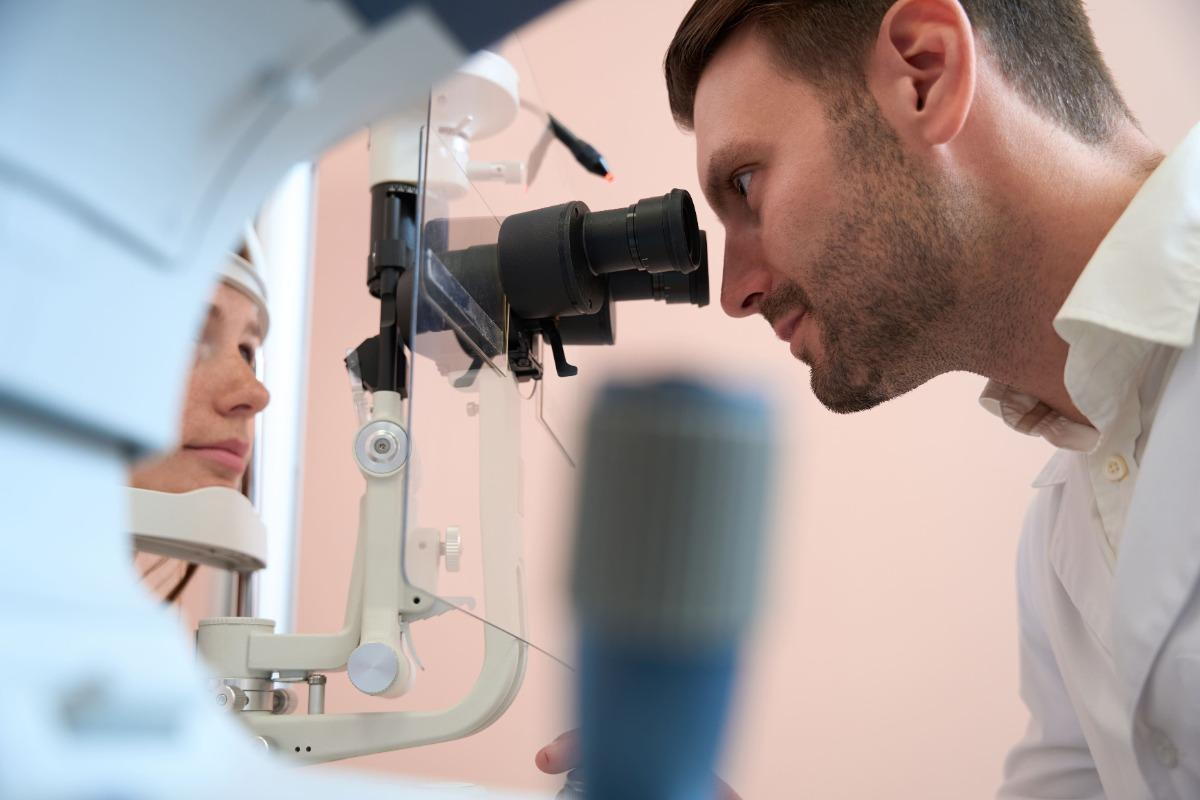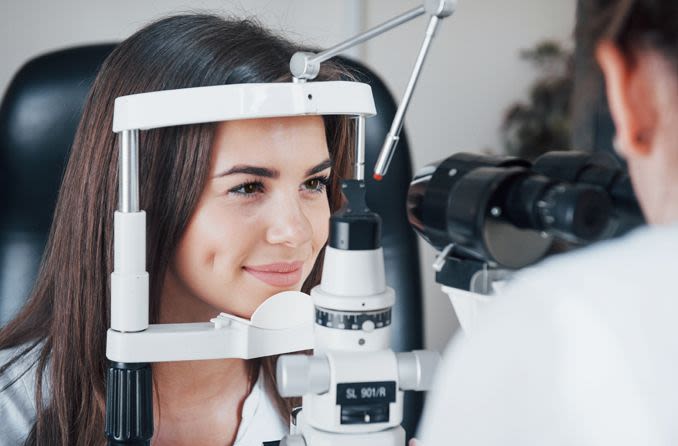All Categories
Featured
Unlocking Opportunities: Comprehensive Low Vision Recovery Alternatives.
Dealing with reduced vision can present distinct difficulties, but contemporary rehab approaches empower people to adjust and flourish. From innovative innovation to hands-on training, there are numerous options created to improve day-to-day life and foster freedom. Here's a thorough take a look at the varied rehab solutions readily available for those with low vision.
The Duty of Low Vision Rehabilitation
Low vision rehab concentrates on helping people optimize their continuing to be vision and establish abilities to handle their surroundings. With a mix of devices, training, and personalized assistance, recovery programs boost functionality and increase self-confidence in navigating everyday tasks.
Key Low Vision Rehabilitation Options
Custom-made Visual Aids
High-Powered Magnifiers: These devices come in handheld, wearable, or digital formats, allowing customers to read, create, or view items up close.
Telescopic Glasses: Suitable for improving range vision, these glasses assist with activities such as enjoying television or analysis indications.
![]()
Filter Lenses: Colored lenses decrease glow, improve comparison, and offer UV defense, boosting comfort and exposure.
Technical Innovations
Electronic Zoom Tools: Desktop computer and portable tools provide flexible magnifying, enabling much easier accessibility to printed materials and digital web content.
![]()
Voice-Assisted Innovation: Screen visitors, voice-enabled smartphones, and AI-driven applications help individuals browse the electronic world a lot more efficiently.
Wearable Vision Aids: Smart glasses furnished with cams and acoustic comments give real-time help with analysis, recognizing things, and spatial orientation.
Professional Training Programs
Positioning and Flexibility Training: This program instructs people exactly how to move confidently within their homes and communities, usually including walking canes or guide canines.
Daily Living Abilities: Specialized training furnishes people with techniques to execute crucial tasks such as cooking, clothing, and handling family tasks.
Flexible Aesthetic Methods: Specialists guide individuals on leveraging peripheral vision or scanning techniques to make up for vision loss.
Ecological Alterations
![]()
Easy adjustments in the house or job can substantially enhance accessibility:
Utilizing different colors for far better things distinction.
Including task lights to enhance presence.
Marking home appliances with tactile indicators for much easier procedure.
Emotional and Social Assistance
Managing vision loss typically entails emotional changes. Support system and therapy services use a risk-free room to share experiences and construct durability.
Peer mentoring programs attach individuals with similar obstacles, cultivating sociability and shared solutions.
Accessing Recovery Services
Low vision rehab services are commonly available with:
Specialized Clinics: Eye doctors and eye doctors educated in reduced vision treatment supply tailored evaluations and options.
Not-for-profit Organizations: Groups like the American Foundation for the Blind and VisionAware use resources, advice, and references.
Community Centers: Neighborhood solutions may give totally free or inexpensive training and accessibility to assistive gadgets.
Final Thoughts
By exploring the numerous rehabilitation alternatives available, those with reduced vision can find approaches that function best for their special requirements and conditions. If you or an enjoyed one encounters vision challenges, do not hesitate to reach out to a low vision specialist to begin the journey towards empowerment and versatility.
Dealing with reduced vision can present distinct difficulties, but contemporary rehab approaches empower people to adjust and flourish. From innovative innovation to hands-on training, there are numerous options created to improve day-to-day life and foster freedom. Here's a thorough take a look at the varied rehab solutions readily available for those with low vision.
The Duty of Low Vision Rehabilitation
Low vision rehab concentrates on helping people optimize their continuing to be vision and establish abilities to handle their surroundings. With a mix of devices, training, and personalized assistance, recovery programs boost functionality and increase self-confidence in navigating everyday tasks.
Key Low Vision Rehabilitation Options
Custom-made Visual Aids
High-Powered Magnifiers: These devices come in handheld, wearable, or digital formats, allowing customers to read, create, or view items up close.
Telescopic Glasses: Suitable for improving range vision, these glasses assist with activities such as enjoying television or analysis indications.

Filter Lenses: Colored lenses decrease glow, improve comparison, and offer UV defense, boosting comfort and exposure.
Technical Innovations
Electronic Zoom Tools: Desktop computer and portable tools provide flexible magnifying, enabling much easier accessibility to printed materials and digital web content.

Voice-Assisted Innovation: Screen visitors, voice-enabled smartphones, and AI-driven applications help individuals browse the electronic world a lot more efficiently.
Wearable Vision Aids: Smart glasses furnished with cams and acoustic comments give real-time help with analysis, recognizing things, and spatial orientation.
Professional Training Programs
Positioning and Flexibility Training: This program instructs people exactly how to move confidently within their homes and communities, usually including walking canes or guide canines.
Daily Living Abilities: Specialized training furnishes people with techniques to execute crucial tasks such as cooking, clothing, and handling family tasks.
Flexible Aesthetic Methods: Specialists guide individuals on leveraging peripheral vision or scanning techniques to make up for vision loss.
Ecological Alterations

Easy adjustments in the house or job can substantially enhance accessibility:
Utilizing different colors for far better things distinction.
Including task lights to enhance presence.
Marking home appliances with tactile indicators for much easier procedure.
Emotional and Social Assistance
Managing vision loss typically entails emotional changes. Support system and therapy services use a risk-free room to share experiences and construct durability.
Peer mentoring programs attach individuals with similar obstacles, cultivating sociability and shared solutions.
Accessing Recovery Services
Low vision rehab services are commonly available with:
Specialized Clinics: Eye doctors and eye doctors educated in reduced vision treatment supply tailored evaluations and options.
Not-for-profit Organizations: Groups like the American Foundation for the Blind and VisionAware use resources, advice, and references.
Community Centers: Neighborhood solutions may give totally free or inexpensive training and accessibility to assistive gadgets.
Final Thoughts
By exploring the numerous rehabilitation alternatives available, those with reduced vision can find approaches that function best for their special requirements and conditions. If you or an enjoyed one encounters vision challenges, do not hesitate to reach out to a low vision specialist to begin the journey towards empowerment and versatility.
Latest Posts
Recognizing When Your Car Needs Skilled Auto Repair at Montclare Auto Repair
Published May 24, 25
1 min read
Learn About Exceptional Auto Repair Services in Chicago – Expert Care for Your Vehicle
Published May 23, 25
1 min read
Boost Your Home's Exterior with Weathercraft's Exterior siding Solutions
Published May 22, 25
1 min read
More
Latest Posts
Recognizing When Your Car Needs Skilled Auto Repair at Montclare Auto Repair
Published May 24, 25
1 min read
Learn About Exceptional Auto Repair Services in Chicago – Expert Care for Your Vehicle
Published May 23, 25
1 min read
Boost Your Home's Exterior with Weathercraft's Exterior siding Solutions
Published May 22, 25
1 min read